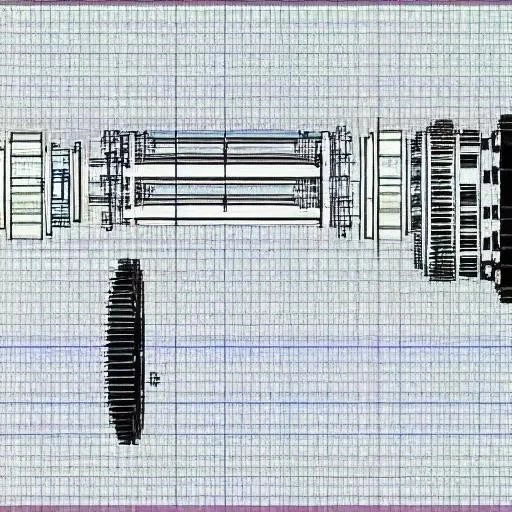For decades, the automatic transmission was often viewed with a curious blend of convenience and condescension. Purists scoffed, praising the raw engagement of a manual gearbox, while everyday drivers embraced the effortless glide through traffic. Yet, beneath this long-standing dichotomy, a quiet, profound revolution has been unfolding, transforming the very essence of how we interact with our vehicles. This isn’t just about ditching the clutch; it’s about an engineering marvel evolving at an astonishing pace, promising a future of unprecedented efficiency, exhilarating performance, and unparalleled driving comfort.
From its rudimentary beginnings in early 20th-century experiments to the sophisticated, lightning-fast systems powering today’s most advanced machines, the automatic transmission has journeyed from a mere convenience feature to a central pillar of modern automotive innovation. Initially conceived as a means to simplify driving, these intricate mechanisms have become incredibly effective orchestrators of power, meticulously managing engine output to deliver optimal performance and fuel economy. As we stand on the cusp of an electrified and increasingly autonomous future, understanding this pivotal component is more crucial than ever, revealing how it continues to adapt and redefine the driving experience for millions globally.
Key Milestones in Automatic Transmission Technology
| Era | Key Development | Description | Impact | |
|---|---|---|---|---|
| Early 20th Century | General Motors Hydramatic (1939) | The first mass-produced, fully automatic transmission, using a fluid coupling and planetary gears. | Pioneered clutch-less driving for the masses, setting the stage for widespread adoption. | |
| Mid-20th Century | Replaced fluid couplings, allowing for greater torque multiplication and smoother power delivery. | Enhanced performance, drivability, and paved the way for more sophisticated hydraulic systems. | ||
| Late 20th Century | Electronic Control Units (ECUs) | Integration of microprocessors to control shift points, line pressure, and torque converter lock-up. | Drastically improved efficiency, shift quality, and allowed for adaptive driving modes. | |
| Early 21st Century | CVT, DCT, and Multi-speed ATs (8, 9, 10-speed) | Continuously Variable Transmissions (CVT) for seamless power, Dual-Clutch Transmissions (DCT) for rapid shifts, and highly geared traditional automatics. | Revolutionized fuel economy, performance, and offered tailored solutions for diverse driving needs. | |
| Future Outlook | Electrification & AI Integration | Adaptation for hybrid and electric powertrains, AI-driven predictive shifting, and integration with autonomous systems. | Paving the way for hyper-efficient, intelligent, and seamless mobility in the next generation of vehicles. | |
| Reference: Wikipedia: Automatic Transmission | ||||
The Modern Marvel: A Symphony of Gears and Software
Gone are the days when an automatic meant sluggish shifts and compromised fuel economy. Today’s automatic transmission systems are sophisticated marvels, each type engineered for specific purposes, demonstrating remarkable adaptability and innovation. Traditional torque converter automatics, like the ubiquitous ZF 8-speed found in numerous luxury and performance vehicles, have evolved to incorporate more gears—sometimes up to 10—and advanced lock-up clutches, delivering a near-perfect blend of smooth cruising and aggressive acceleration. These units, masterfully designed, deftly manage power delivery, ensuring that the engine consistently operates within its most efficient RPM range.
Then there are the Continuously Variable Transmissions (CVTs), which, instead of fixed gears, utilize a pair of pulleys and a belt or chain to provide an infinite number of gear ratios. Once criticized for their “rubber band” feel, modern CVTs from manufacturers like Honda and Toyota have become incredibly refined, offering seamless acceleration and often superior fuel efficiency, particularly in urban driving conditions. They represent a paradigm shift in power delivery, optimizing engine output continuously rather than in discrete steps, ultimately enhancing both economy and smoothness for the everyday commuter.
For those craving the ultimate in performance, Dual-Clutch Transmissions (DCTs) stand as a testament to engineering prowess. Essentially two manual transmissions working in parallel, one handling odd gears and the other even, DCTs execute shifts with astonishing speed—often in mere milliseconds—making them the preferred choice for high-performance sports cars and supercars. Brands like Porsche with their PDK system, and Volkswagen’s DSG, have famously harnessed this technology, transforming the driving experience by offering manual-like engagement without the need for a clutch pedal, thus blending raw exhilaration with practical ease.
Beyond the Gearbox: Efficiency, Safety, and the AI Revolution
The impact of advanced automatic transmissions extends far beyond mere convenience. By integrating insights from sophisticated AI and sensor data, these systems are becoming remarkably effective at optimizing fuel consumption, often surpassing the efficiency of a human driver. Predictive shifting, for instance, allows the transmission to anticipate upcoming road conditions or driver inputs, selecting the optimal gear even before the need arises. This intelligent foresight not only conserves fuel but also enhances safety by reducing sudden, unexpected shifts that could destabilize the vehicle.
“Modern automatic transmissions are effectively the brain of the powertrain, constantly analyzing and adapting,” explains Dr. Lena Karlsson, a leading automotive engineer at a prominent European research institute. “They are not just reacting; they are learning, predicting, and optimizing in real-time. This level of integration is critical for the next generation of vehicles, especially as we move towards greater electrification and autonomous capabilities.” This expert perspective underscores the profound shift from mechanical components to intelligent, software-driven systems.
Moreover, the reduction in driver workload provided by automatic transmissions contributes significantly to road safety. By eliminating the need to manually operate a clutch and shifter, drivers can maintain both hands on the wheel and focus intently on the road ahead, especially in demanding traffic or challenging weather conditions. This enhanced concentration invariably leads to quicker reaction times and a more secure driving experience for everyone on the road, highlighting a subtle yet powerful contribution to public welfare.
The Road Ahead: Seamless, Sustainable Mobility
Looking forward, the evolution of the automatic transmission is inextricably linked to the broader trends shaping the automotive industry. As electric vehicles gain prominence, the role of multi-speed transmissions in optimizing electric motor efficiency and extending range is being actively explored, challenging the conventional wisdom of single-speed EVs. Similarly, in hybrid vehicles, sophisticated automatic systems seamlessly blend power from internal combustion engines and electric motors, demonstrating an unparalleled synergy that delivers both performance and environmental responsibility.
The future promises even more radical advancements. Imagine transmissions that communicate with traffic infrastructure to pre-select gears for upcoming intersections, or systems that use biometric data from the driver to tailor shift points for maximum comfort or sportiness. The possibilities, driven by relentless innovation and an increasingly connected world, are boundless. Far from being a relic, the automatic transmission is rapidly evolving into an intelligent, indispensable partner in our journey towards a more seamless, sustainable, and enjoyable mobility future. It stands not merely as a component, but as a dynamic testament to human ingenuity, continuously propelling us forward.






